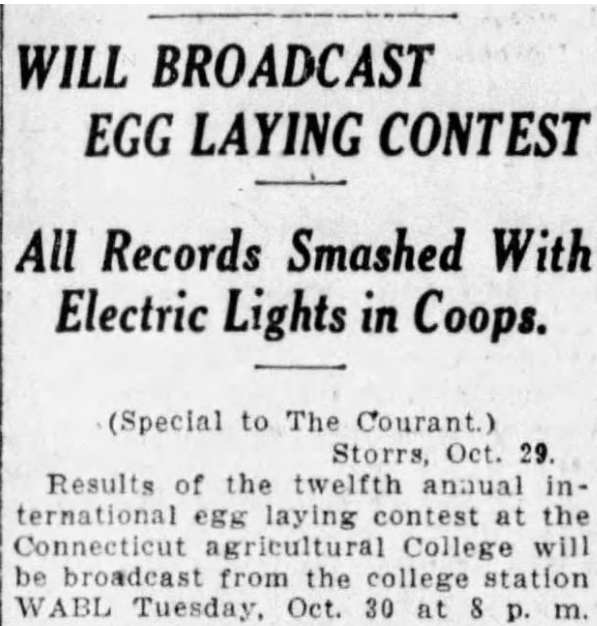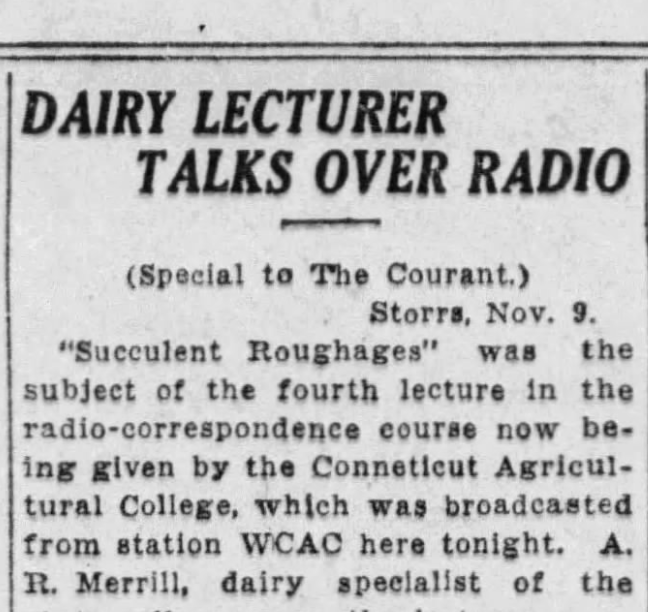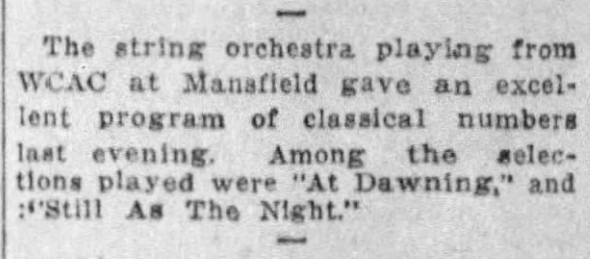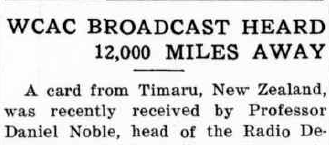WHUS was born out of a desire to educate others. Our first programs, aside from news broadcasts, involved the Extension Service reaching out and educating farmers over the airwaves. Let’s explore our humble beginnings, starting with our forays into AM radio.
Intro to Radio History
Written by John Babina, a DJ at UConn who was here from 1962 to 1967. Edited for brevity.
“Around the turn of the last century (1890 to 1920), the population was enthralled by all the technical changes going on. In the case of radio, 3 major inventions made that possible. Guglielmo Marconi invented the basic radio in 1895 so that he could send code over the air, using a spark. Next, Reginald Fessenden, a Canadian, eliminated the interfering spark and put human voices and music on the radio. And finally, Lee de Forest invented the triode tube amplifier called an Audion. These were the most essential components for powering the new radios of the day.
Then, along came a young man named Daniel Noble who would embrace radio-broadcasting as a worthy discipline . . . .
In this early time frame, (1921) Dan Noble of Waterbury, applied to UConn as a freshman and also acquired significant knowledge on building and operating Standard Broadcast stations (Today, they are called AM stations).
Simultaneously, UConn administrators were looking into using the new medium of radio to transmit instructional programs on agriculture over a wide area of Connecticut.
Keep in mind, due to the growing interest in this new medium, many people were forming clubs to just listen at night for distant stations. They logged as many station contacts as they could from a wide listening area, carefully storing their nightly records…
The Start of Radio at UConn
In the 1920s, the Dean of Mechanical Engineering, John Fitts, was ecstatic about the possibilities of radio and urged President Charles Beach to investigate. Like the rest of the world, the University of Connecticut was connected with the community via electric telegraph systems.
Telegraphs transmitted messages through Morse code, a system of dots and dashes, utilizing physical transmission lines. At the receiver’s end, operators interpreted these electrical signals, a process that was as boring as it was tedious.
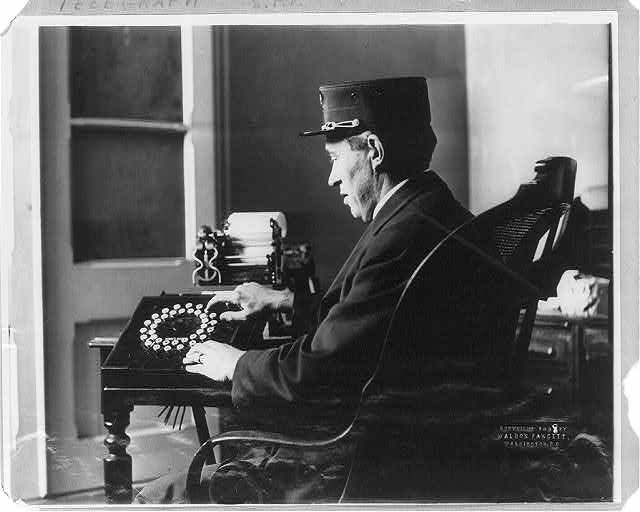
The next innovation wasn’t called “radio,” but its predecessor, wireless telegraphy, came rolling in the early 1900s. Experiments in ‘wireless telegraph’ technology began reshaping communication across the U.S. Text messages didn’t need physical wires anymore.
Henceforth, UConn was infected with the radio bug. The Mechanical Engineering Department decided to install three wireless receiving stations (WRS) on campus in early May 1921. These WRSs made it so voice transmissions were wireless. Students could gather around these mini-stations and listen to live concerts and lectures given in distant cities like Pittsburgh and Washington.

Enter Daniel Earl Noble: A Mechanical Engineering freshman (’30) who took to radio with a manic zeal. In 1921, he installed a WRS in the Mechanic Arts Building.
In the near future, he expects to set up his transmitting set which is on a par with the receiving apparatus and will make his station one of the most powerful in this part of the state.”
The Connecticut Campus profiling Dan on November 8, 1921
WABL is born.

June 1923: WABL’s first program travels across the airwaves, covering the Baccalaureate Services at the Storrs Congregational Church. WABL broadcasts at 100 watts at 1060 kHz (or 1060 AM). It could be heard as far west as Chicago and far south as Virginia. We started out broadcasting in the church, but moved after a studio was constructed in the Mechanic Arts Building.
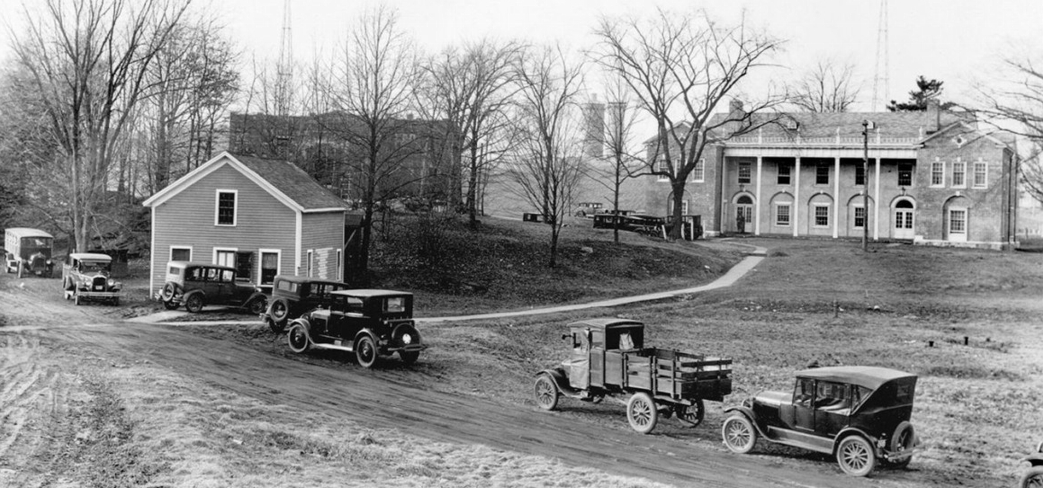

June 1925: Noble completed the upgrade of WABL’s transmitter from 100 to 500 watts. The call letters are changed to WCAC.
WCAC is born.
There’s a couple of reports from the Connecticut Campus at the time about how far our signal went when testing. One claims that the new signal even reached the West Coast!
WCAC FCC Documents and Registration

In September 1926, we began our years-long agreement with Hartford station WTIC to rebroadcast their content on our station, including their athletic contests.
While WCAC was growing, other stations in Connecticut were too. We doubled our broadcasting power in 1932, but there are limits to how powerful a station can be before starting to interfere with other stations’ broadcasts. Commercial stations were more powerful and had more resources, forcing WCAC to compete for airspace. The formation of the Federal Communications Commission (the government’s regulatory body for radio) in 1934 did not help the station survive.
We went from this program schedule in 1932…

To this in 1936… Limited to about three hours a week.

April 30, 1936: WCAC broadcasts for the last time. Daniel Noble cites interference from other stations and not having enough power to cover the state. It was his dream to have a statewide educational radio.
Faces, Voices, and Broadcasts
In this period, we usually broadcast market reports, educational programs, news, and sports. Below are some examples of the standout people and programs that broadcast on our airwaves.
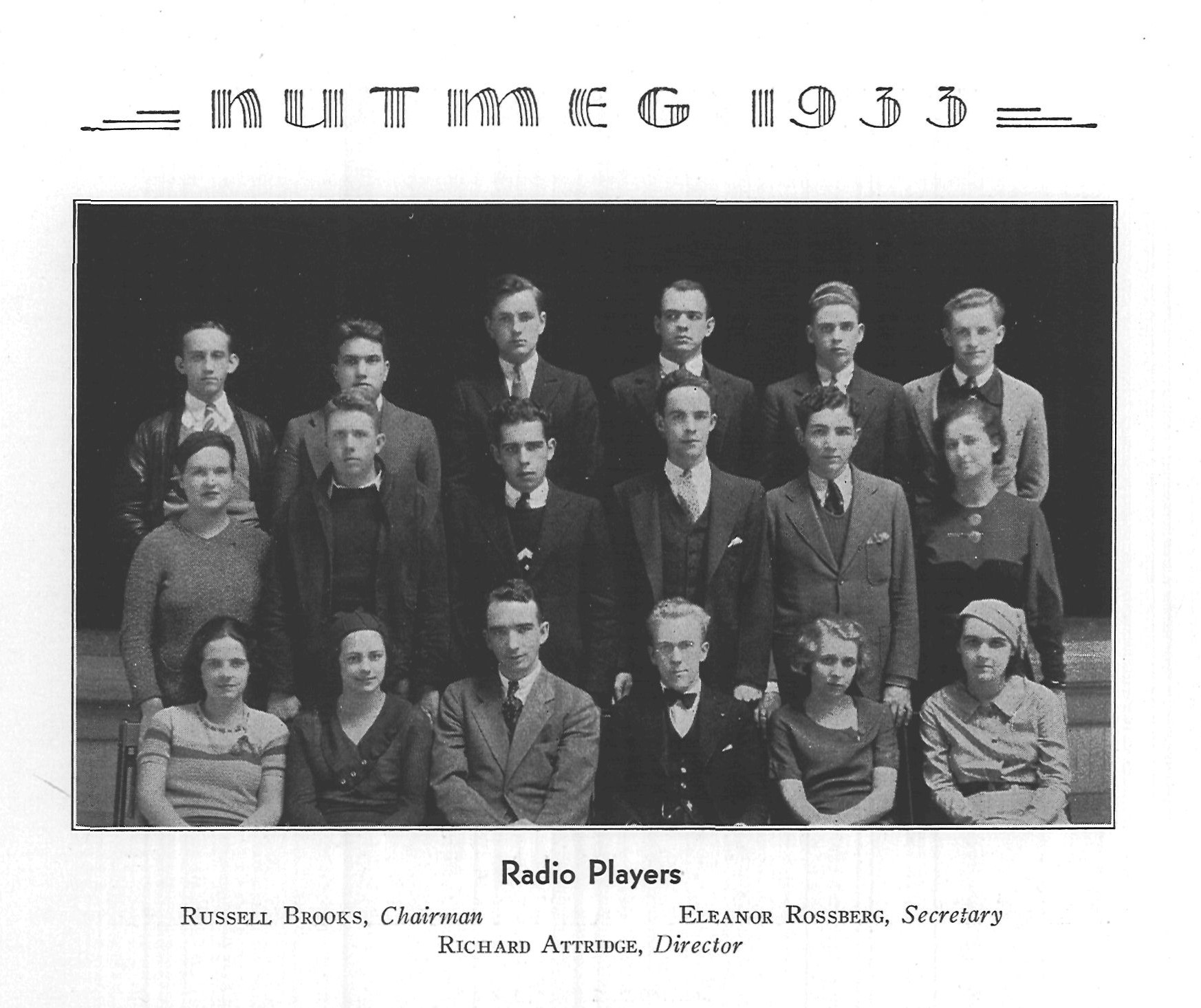
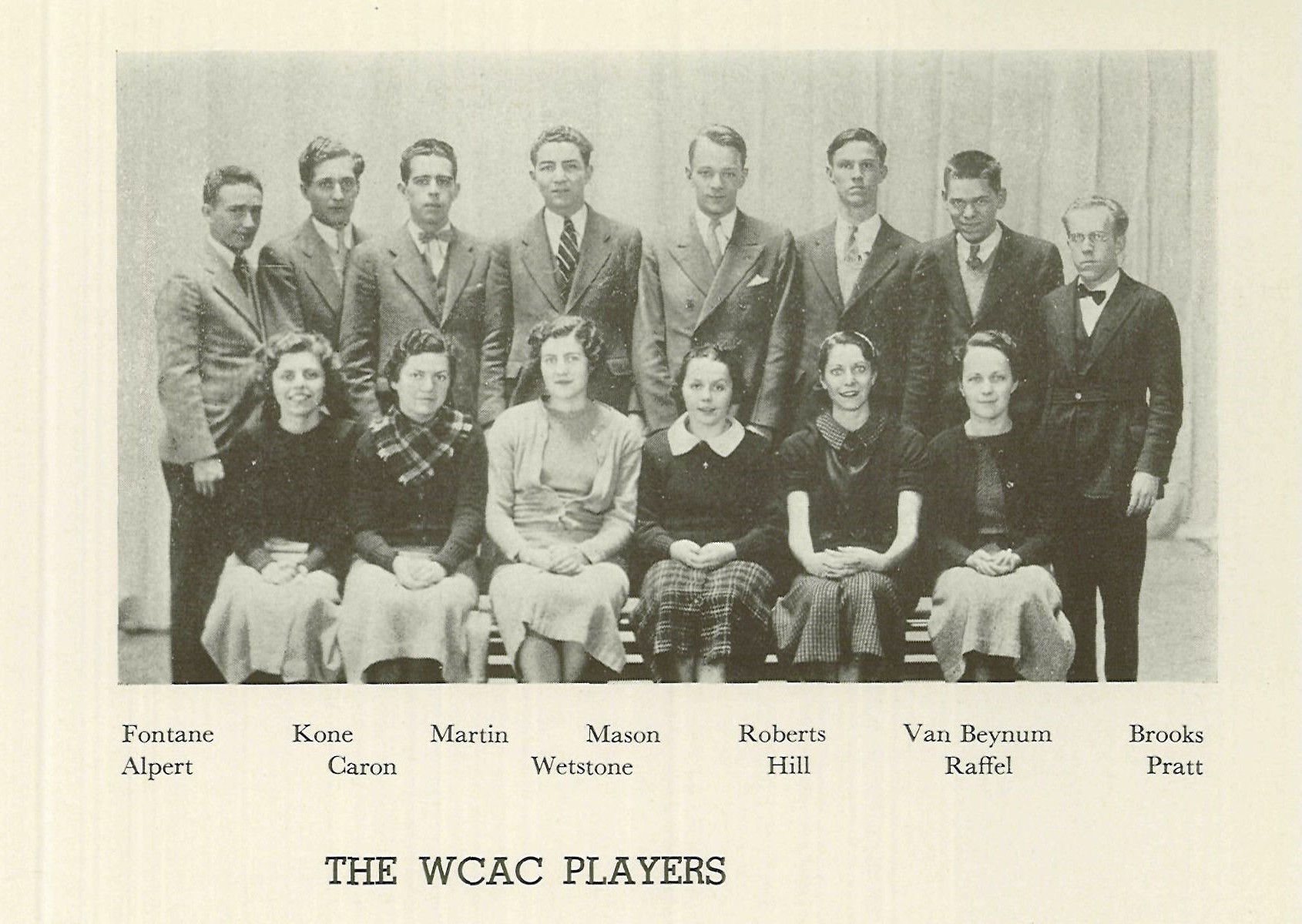
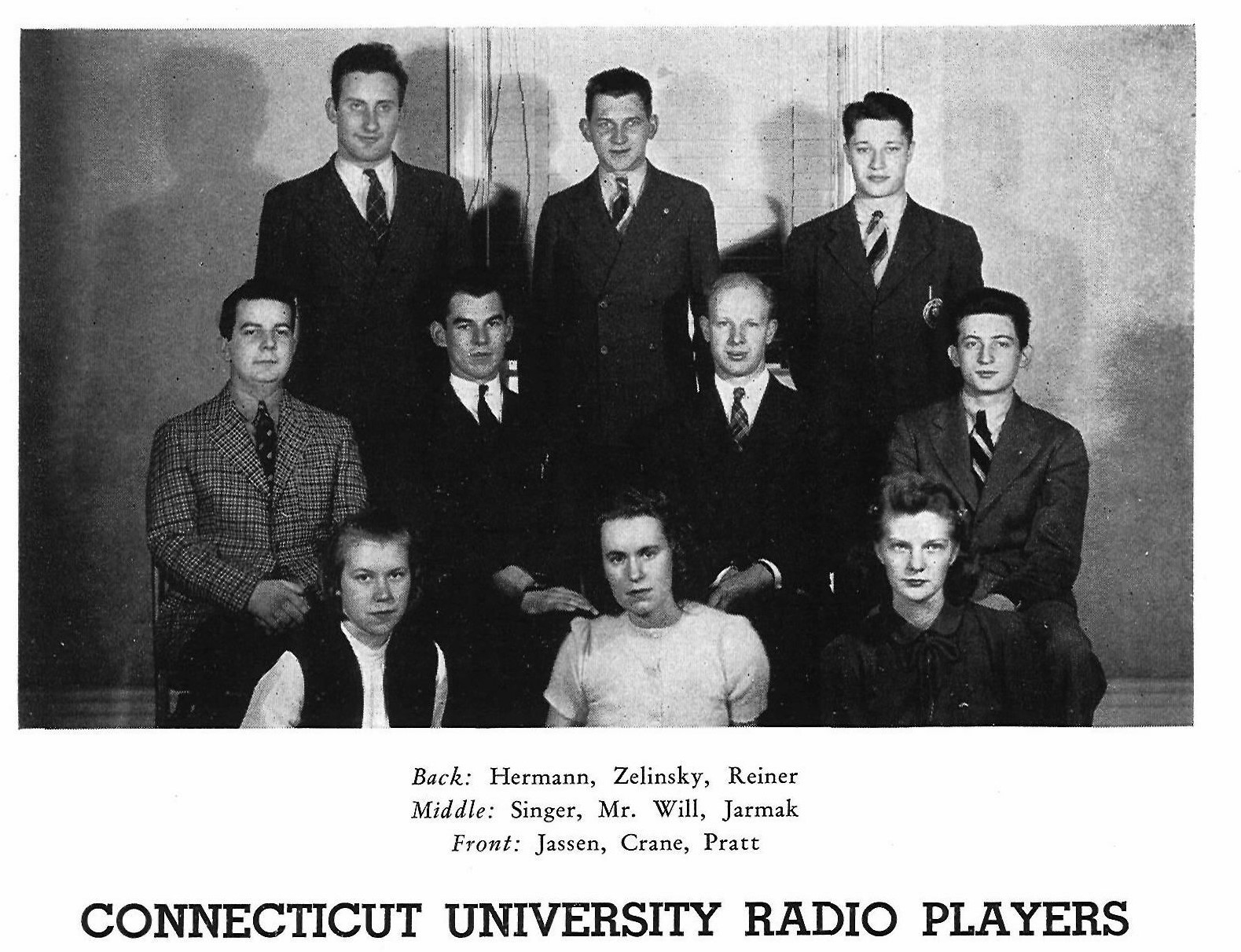
Radio drama was a big part of WCAC programming. In 1931, a group of students took an interest in radio dramatics, but it started in 1932 when faculty voted to make it an official student activity. Richard Attridge (’30), the Technical Editorial Assistant, was to coach the WCAC Players. Their first play was Oscar Wilde’s The Importance of Being Earnest. They soon transcended adaptations and broadcasted over a dozen plays written by students and professors. English Professor Judith Matlack’s drama “The Shine on the Waters” even got sold to WTIC and presented by the Hartford Playhouse of the Air for rebroadcast due to its initial success. After WCAC shut down, they renamed themselves to the Connecticut State College Radio Players and performed on other stations like WTIC.
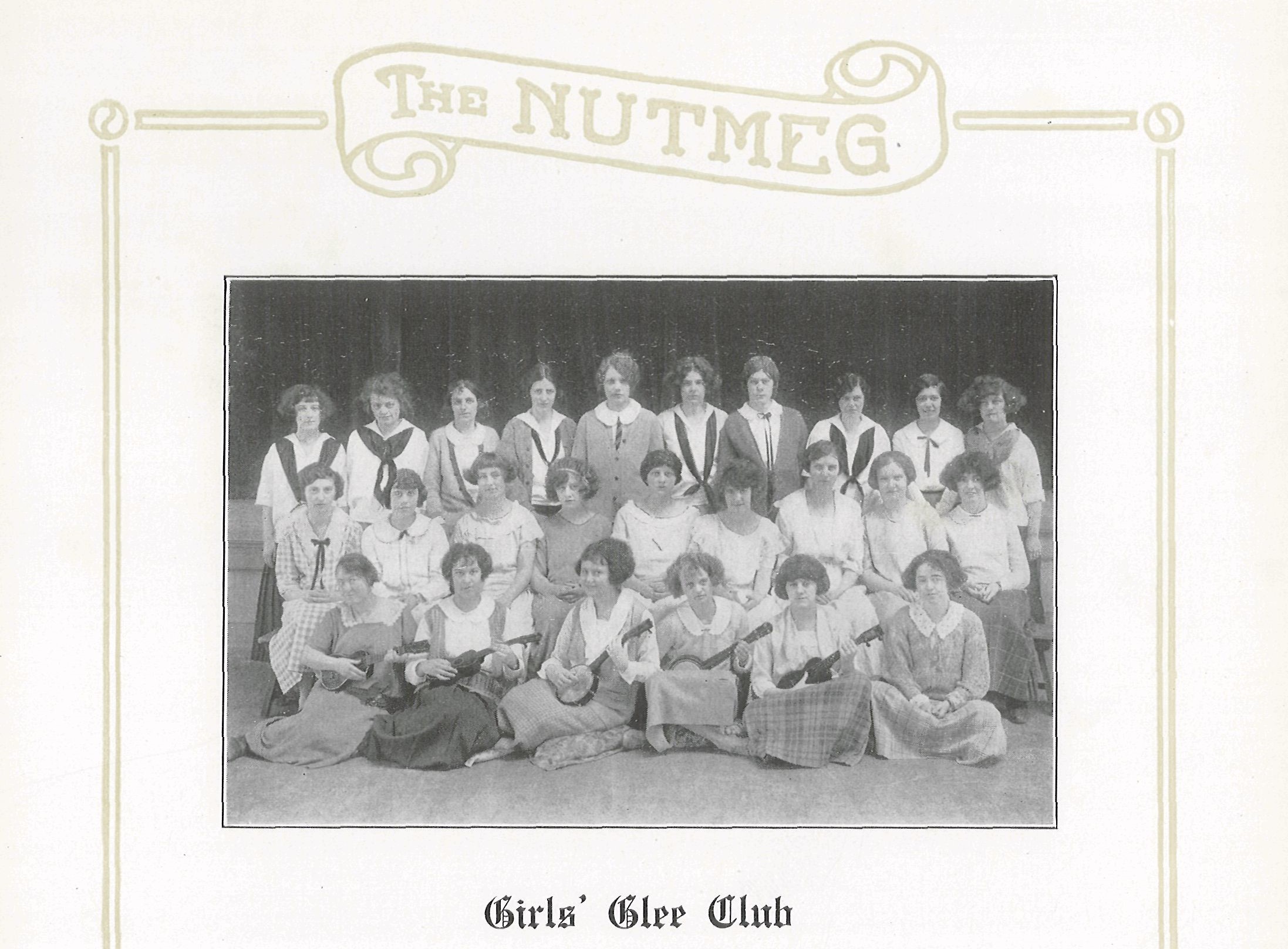
The Girl’s Glee Club was a group of women who sung short songs. In the spring of 1924, they broadcast a concert on WABL and continued to do so throughout its lifetime.
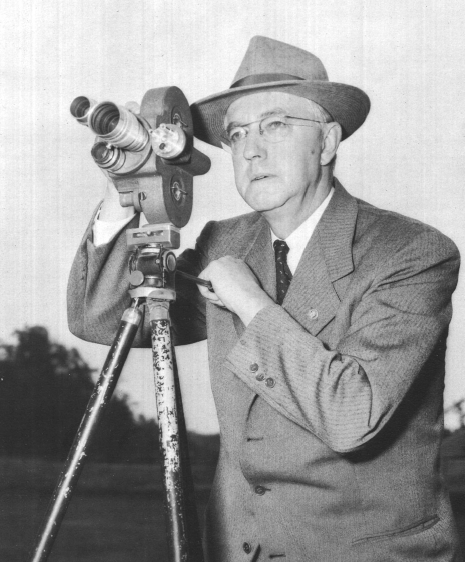
Professor Jerald Manter was the university’s “unofficial official” photographer and a professor of ecology. He regularly broadcasted a Nature Lore program, which was quite popular.
Collapse the block below to see one of these programs.
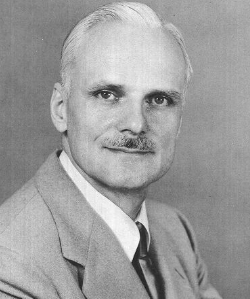
Albert Waugh is known for many things, but to us, he was one of the more exciting sports announcers on WCAC and was involved with the three major sports (on radio) at the time: basketball, football, and baseball.
Nature Lore 1936 Program Guide

Professor Arsene Croteau was a Modern Languages professor who used the medium of radio to broadcast French and other foreign language lessons weekly to a potential audience of 20,000. He also directed students to produce radio plays in French, as pictured below!
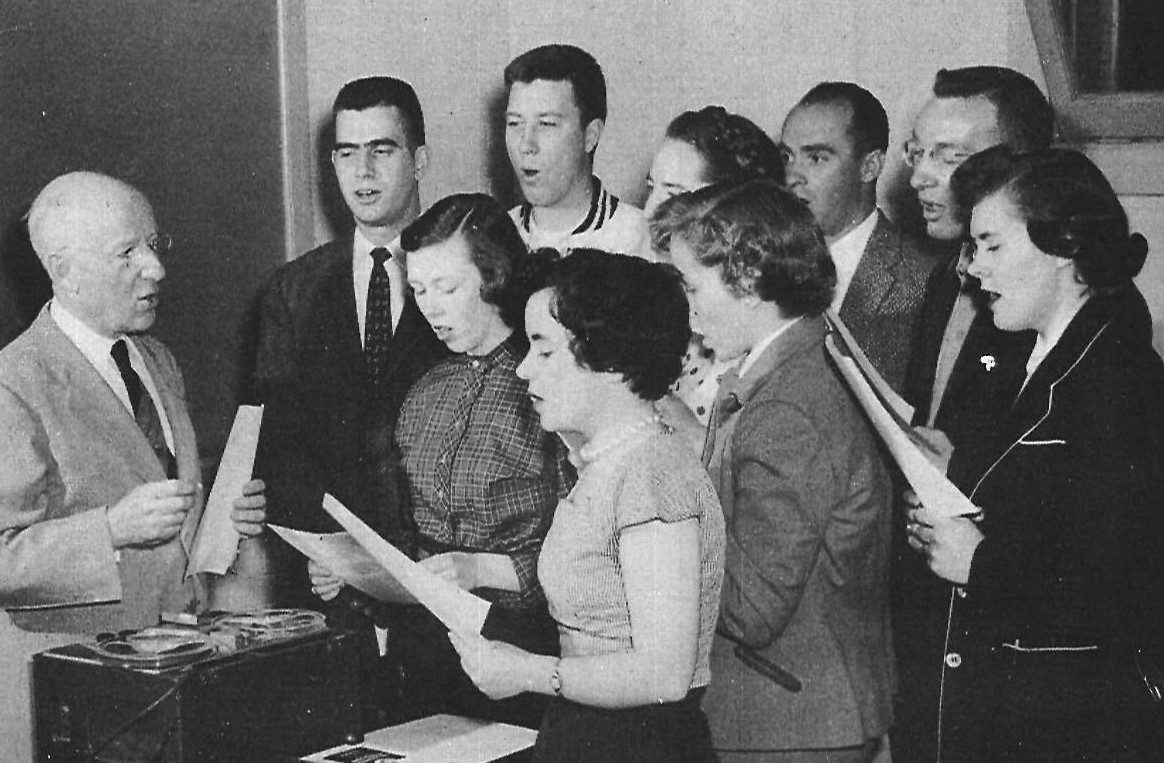
Below is a smattering of other broadcasts that we had.
